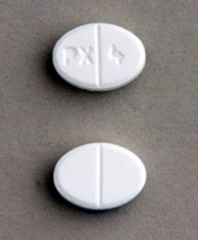WELCOME TO OUR PARKINSON'S PLACE!
I HAVE PARKINSON'S DISEASES AND THOUGHT IT WOULD BE NICE TO HAVE A PLACE WHERE THE CONTENTS OF UPDATED NEWS IS FOUND IN ONE PLACE. THAT IS WHY I BEGAN THIS BLOG.
I COPY NEWS ARTICLES PERTAINING TO RESEARCH, NEWS AND INFORMATION FOR PARKINSON'S DISEASE, DEMENTIA, THE BRAIN, DEPRESSION AND PARKINSON'S WITH DYSTONIA. I ALSO POST ABOUT FUNDRAISING FOR PARKINSON'S DISEASE AND EVENTS. I TRY TO BE UP-TO-DATE AS POSSIBLE.
I AM NOT RESPONSIBLE FOR IT'S CONTENTS. I AM JUST A COPIER OF INFORMATION SEARCHED ON THE COMPUTER. PLEASE UNDERSTAND THE COPIES ARE JUST THAT, COPIES AND AT TIMES, I AM UNABLE TO ENLARGE THE WORDING OR KEEP IT UNIFORMED AS I WISH. IT IS IMPORTANT TO UNDERSTAND I AM A PERSON WITH PARKINSON'S DISEASE. I HAVE NO MEDICAL EDUCATION,
I JUST WANT TO SHARE WITH YOU WHAT I READ ON THE INTERNET. IT IS UP TO YOU TO DECIDE WHETHER TO READ IT AND TALK IT OVER WITH YOUR DOCTOR. I AM JUST THE COPIER OF DOCUMENTS FROM THE COMPUTER. I DO NOT HAVE PROOF OF FACT OR FICTION OF THE ARTICLE. I ALSO TRY TO PLACE A LINK AT THE BOTTOM OF EACH ARTICLE TO SHOW WHERE I RECEIVED THE INFORMATION SO THAT YOU MAY WANT TO VISIT THEIR SITE.
THIS IS FOR YOU TO READ AND TO ALWAYS KEEP AN OPEN MIND.
PLEASE DISCUSS THIS WITH YOUR DOCTOR, SHOULD YOU HAVE ANY QUESTIONS, OR CONCERNS. NEVER DO ANYTHING WITHOUT TALKING TO YOUR DOCTOR FIRST..
I DO NOT MAKE ANY MONEY FROM THIS WEBSITE. I VOLUNTEER MY TIME TO HELP ALL OF US TO BE INFORMED.
I WILL NOT ACCEPT ANY ADVERTISEMENT OR HEALING POWERS, HEALING FROM HERBS AND ETC. UNLESS IT HAS GONE THROUGH TRIALS AND APPROVED BY FDA. IT WILL GO INTO SPAM.
THIS IS A FREE SITE FOR ALL WITH NO ADVERTISEMENTS
THANK YOU FOR VISITING! TOGETHER WE CAN MAKE A DIFFERENCE!
TRANSLATE
Thursday, August 29, 2013
BIOMARKERS FAIL TO DIAGNOSE PARKINSON'S DISEASE
It had previously been assumed that biomarkers could be an effective means of diagnosing Parkinson's Disease. However, an evaluation of all the methods assessed suggest that the use of biomarkers is insufficient. A biomarker is a substance used as an indicator of a biological state or illness.
 A systematic review was undertaken to determine which biomarkers for disease progression in Parkinson's Disease exist. 183 studies were included. The sensitivity of the tests was an average of 71%, which is insufficient for Parkinson's Disease diagnosis. However, the range in sensitivity was between 51% and 86% showing that some of the methods were closer to having a practical use but were still less accurate than other methods of diagnosing Parkinson's Disease that are available. The authors found insufficient evidence to recommend the use of any biomarker for assessing disease progression in Parkinson's Disease clinical trials. They believe that this may simply reflect the poor quality of research in this area. They therefore present a provisional 'roadmap' for conducting future disease progression biomarker studies and recommend new quality criteria by which future studies may be judged.
A systematic review was undertaken to determine which biomarkers for disease progression in Parkinson's Disease exist. 183 studies were included. The sensitivity of the tests was an average of 71%, which is insufficient for Parkinson's Disease diagnosis. However, the range in sensitivity was between 51% and 86% showing that some of the methods were closer to having a practical use but were still less accurate than other methods of diagnosing Parkinson's Disease that are available. The authors found insufficient evidence to recommend the use of any biomarker for assessing disease progression in Parkinson's Disease clinical trials. They believe that this may simply reflect the poor quality of research in this area. They therefore present a provisional 'roadmap' for conducting future disease progression biomarker studies and recommend new quality criteria by which future studies may be judged.BASEBALL STAR DIAGNOSED WITH PARKINSON'S DISEASE
 Dave Parker, a two time winner of the baseball World Series has been diagnosed with Parkinson's Disease. Dave Parker is a retired American baseball player. He began his career in the Major League in 1973 with the Pittsburgh Pirates, where he spent ten years. He went on to play with Cincinnati Reds, Oakland Athletics, Milwaukee Brewers, California Angels, and Toronto Blue Jays. He won the World Series twice, in 1979 and 1989. He retired from baseball in 1991. Now aged 62, he was first diagnosed with Parkinson's Disease early in 2012 but kept it quiet until now except for informing some close friends. For the time being he is not taking any medication and is instead relying on natural remedies.
Dave Parker, a two time winner of the baseball World Series has been diagnosed with Parkinson's Disease. Dave Parker is a retired American baseball player. He began his career in the Major League in 1973 with the Pittsburgh Pirates, where he spent ten years. He went on to play with Cincinnati Reds, Oakland Athletics, Milwaukee Brewers, California Angels, and Toronto Blue Jays. He won the World Series twice, in 1979 and 1989. He retired from baseball in 1991. Now aged 62, he was first diagnosed with Parkinson's Disease early in 2012 but kept it quiet until now except for informing some close friends. For the time being he is not taking any medication and is instead relying on natural remedies.CLINICAL TRIAL OF AFQ056 FOR DYSKINESIA
AFQ056 is a new glutamate receptor antagonist being developed for the treatment of L-dopa induced dyskinesia. Dyskinesia is a difficulty or distortion in performing voluntary movements, which often occurs as a side effect of long term therapy with L-dopa. For more information go to Dyskinesia. People with Parkinson's Disease were given either 20mg, 50mg, 100mg, 150mg, or 200mg daily for 12 weeks. The primary outcome in order to assess the effect on dyskinesia was the modified Abnormal Involuntary Movements Scale.
 greatest effect. However, no significant changes were observed on the 26-item Parkinson's Disease Dyskinesia Scale or the Patient's / Clinician's Global Impression of Change. Unified Parkinson's Disease Rating Scale part III scores were not significantly changed, indicating no worsening of motor symptoms. The most common adverse events were dizziness, hallucination, fatigue, nasopharyngitis, diarrhea, and insomnia. These results can guide the slection of doses for future clinical trials.
greatest effect. However, no significant changes were observed on the 26-item Parkinson's Disease Dyskinesia Scale or the Patient's / Clinician's Global Impression of Change. Unified Parkinson's Disease Rating Scale part III scores were not significantly changed, indicating no worsening of motor symptoms. The most common adverse events were dizziness, hallucination, fatigue, nasopharyngitis, diarrhea, and insomnia. These results can guide the slection of doses for future clinical trials.PRAMIPEXOLE : EXTENDED RELEASE v IMMEDIATE RELEASE
Changing from Immediate release Pramipexole to Extended release Pramipexole was found to cause a reduction in Parkinson's Disease symptoms. Pramipexole, which is marketed as Mirapex, Mirapexin, and Sifrol, is a dopamine agonist used in the treatment of Parkinson's Disease. For more information go to Mirapex and Mirapex ER.
 This study aimed to evaluate the efficacy and safety of an extended-release tablet formulation of pramipexole (PPX-ER) given once daily when switched from an immediate-release tablet formulation (PPX-IR) given 3 times daily. The extended release version evens out the effect of Pramipexole. Parkinson's Disease symptom scores were reduced after 4 weeks and after 8 weeks. There was no change in the nocturnal and early morning symptoms (NEMS) score, or the Parkinson's Disease Sleep Scale (PDSS-2). Nearly two thirds of patients and caregivers preferred the extended release version.
This study aimed to evaluate the efficacy and safety of an extended-release tablet formulation of pramipexole (PPX-ER) given once daily when switched from an immediate-release tablet formulation (PPX-IR) given 3 times daily. The extended release version evens out the effect of Pramipexole. Parkinson's Disease symptom scores were reduced after 4 weeks and after 8 weeks. There was no change in the nocturnal and early morning symptoms (NEMS) score, or the Parkinson's Disease Sleep Scale (PDSS-2). Nearly two thirds of patients and caregivers preferred the extended release version.LINDA RONSTADT DIAGNOSED WITH PARKINSON'S DISEASE
 The American singer Linda Ronstadt has been diagnosed with Parkinson's Disease and consequently can no longer sing. She won 11 Grammy Awards and has gold, platinum and multiplatinum albums. sing. For more information go to Linda Ronstadt. Linda Ronstadt, who is now 67, told AARP today that she was daignosed with Parkinson's Disease 8 months ago and that she began to show symptoms 8 years ago. Linda Ronstadt now walks with the aid of poles when on uneven ground and uses a wheelchair when she travels. However, her soon to be published autobiography makes no mention of her having Parkinson's Disease.
The American singer Linda Ronstadt has been diagnosed with Parkinson's Disease and consequently can no longer sing. She won 11 Grammy Awards and has gold, platinum and multiplatinum albums. sing. For more information go to Linda Ronstadt. Linda Ronstadt, who is now 67, told AARP today that she was daignosed with Parkinson's Disease 8 months ago and that she began to show symptoms 8 years ago. Linda Ronstadt now walks with the aid of poles when on uneven ground and uses a wheelchair when she travels. However, her soon to be published autobiography makes no mention of her having Parkinson's Disease. NAVAJO HAVE ONE OF THE HIGHEST PREVALENCES OF PARKINSON'S DISEASE
The Navajo Indians have been found to have one of the world's highest prevalences of Prakinson's Disease. The prevalence of Parkinson's Disease amongst the Navajo Indians is 336 per 100,000.
 These figures are higher than for any U.S. state with Nebraska having the highest prevalence at 329 per 100,000. Amongst Navajo men it is even higher at 438 per 100,000. The Navajo are concentrated in Arizona and New Mexico in the USA. For more information go to Navajo. Native Americans, including American Indian and Alaska Native peoples as a whole have an even higher prevalence rate of 355 per 100,000. It is not known why the prevalence is so high amongst Native Americans.
These figures are higher than for any U.S. state with Nebraska having the highest prevalence at 329 per 100,000. Amongst Navajo men it is even higher at 438 per 100,000. The Navajo are concentrated in Arizona and New Mexico in the USA. For more information go to Navajo. Native Americans, including American Indian and Alaska Native peoples as a whole have an even higher prevalence rate of 355 per 100,000. It is not known why the prevalence is so high amongst Native Americans.
